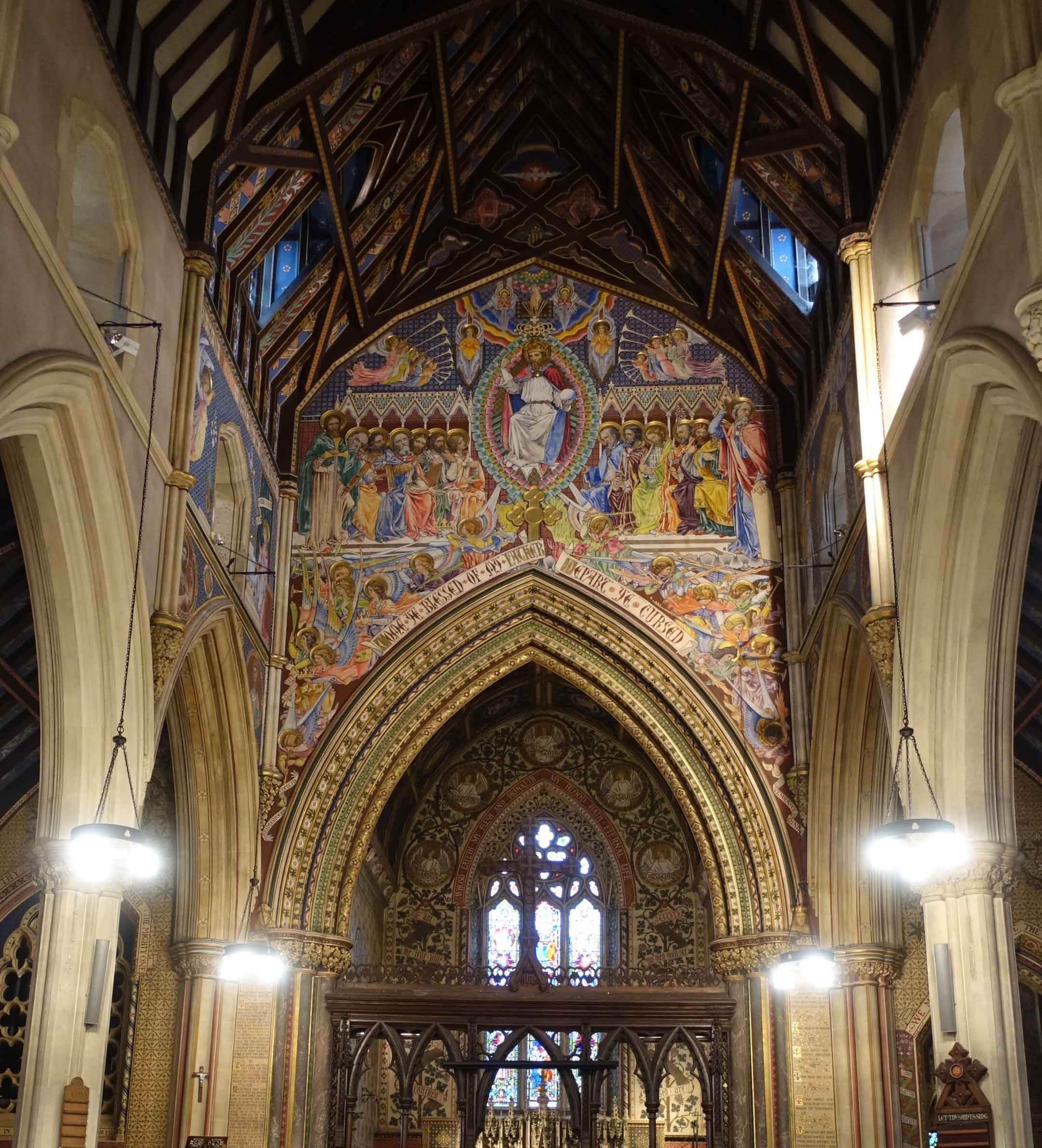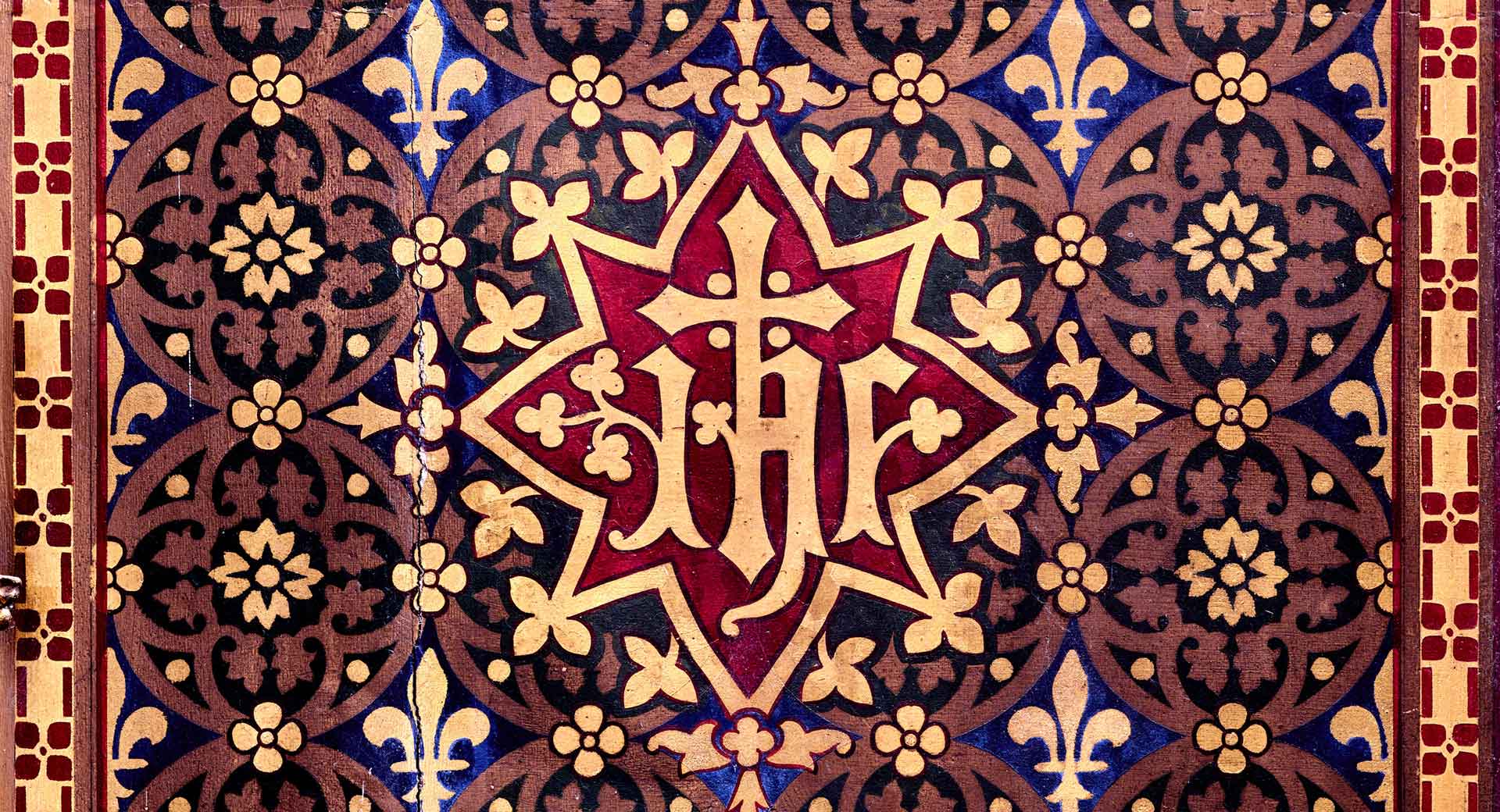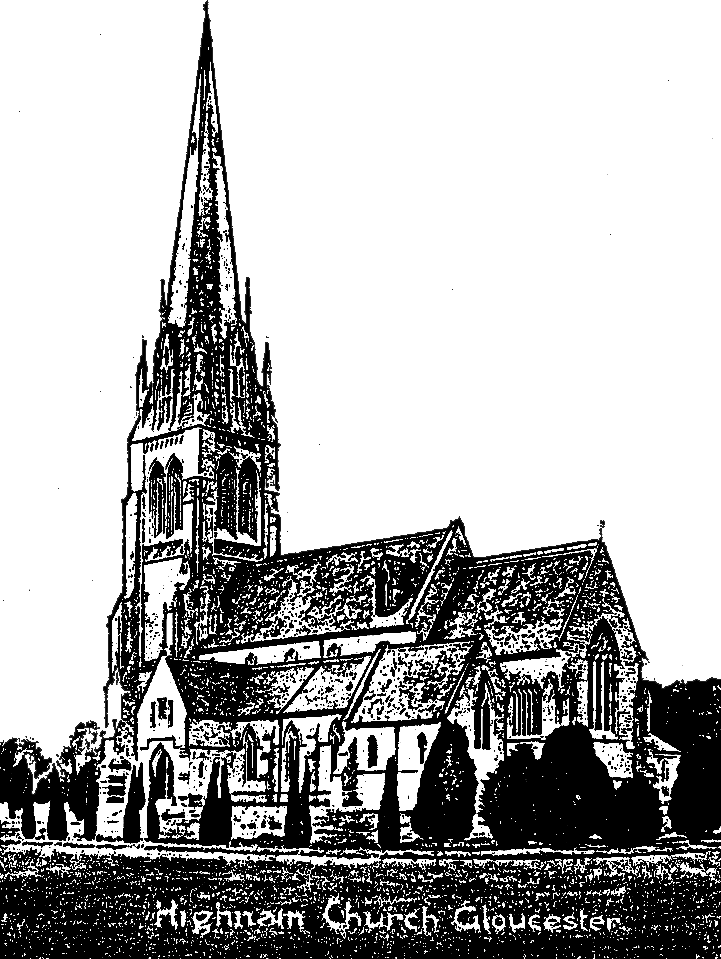Holy Innocents, its History and Significance
Holy Innocents; Its History and Significance
Highnam Church is a Grade 1 Listed Building. Simon Jenkins included Holy Innocents in his selection of the top 100 churches in England; and John Betjeman described it as “the most complete Victorian church in the country In Pevsner’s “Buildings of England (Gloucestershire: The Vale and Forest of Dean)”, he describes the church as the “fulfilment of the Pugin ideal and a very notable monument to the Oxford Movement”.
Although only two miles from Gloucester, the body of the Church is hardly visible from the road surrounded by the parkland of Highnam Court; but its spire soars up through the trees and is a remarkable landmark.
The Church was commissioned by Thomas Gambier Parry who owned Highnam Court, as a memorial to his wife Isabella and three of their sons who died in their infancy.
Parry, who studied at Oxford, was very much influenced by the Oxford Movement and worked closely with the architect Henry Woodyer to produce a building that reflected his beliefs and commitment to the Gothic Revival.
The building was consecrated in 1851.
No expense was spared and Woodyer and Parry commissioned the best craftsmen and materials to produce a fitting interior. Gambier Parry was a very talented artist, and on completion, started painting spirit frescoes of a “Doom” over the chancel arch representing the judgement of both the good and the evil. The entire length of the north aisle wall became a depiction of the of the procession of the entry of Jesus to Jerusalem on Palm Sunday.
The stencilled lower walls and many swags of biblical texts were completed by expert assistants.
The stained glass windows all reflect biblical references to children and prominent Old and New Testament figures. These were designed by A N W Pugin on the North aisle, and William Wailes to the South.
In the side chapel there are monuments to the Gambier Parry family. Of particular interest is one to Sir Hubert Parry, eldest son of his first wife Isabella, who spent his formative years at Highnam and took organ lessons here. He went on to be one of the foremost composers of the late 19th and early 20th Centuries including setting “Jerusalem” to music.


